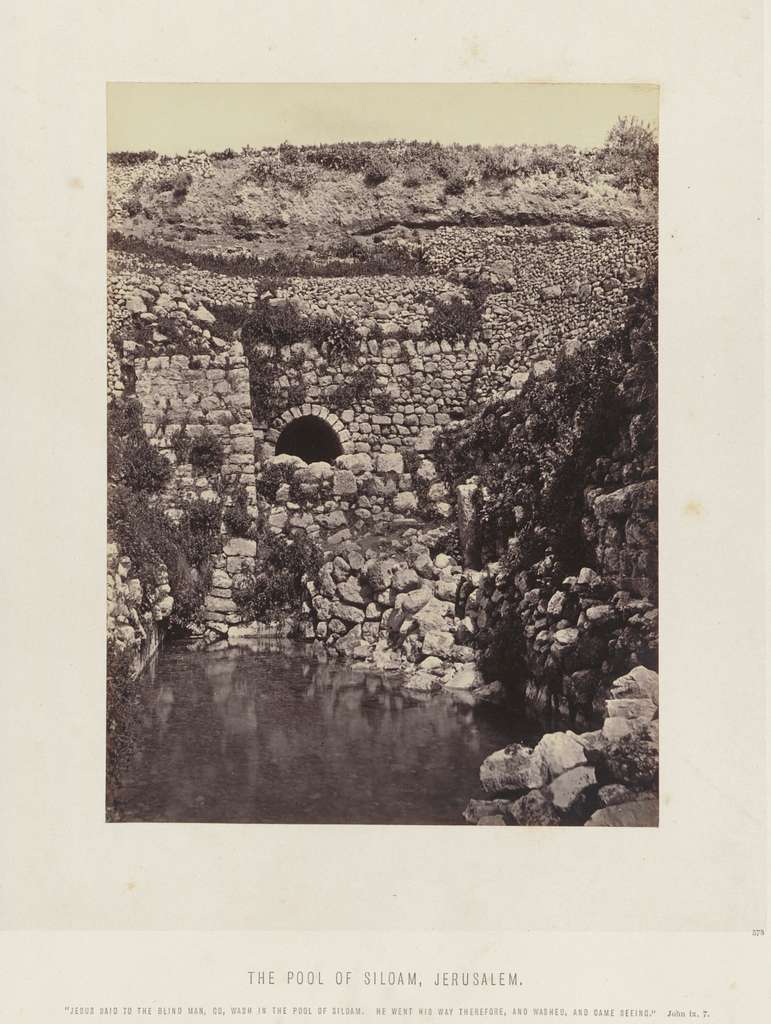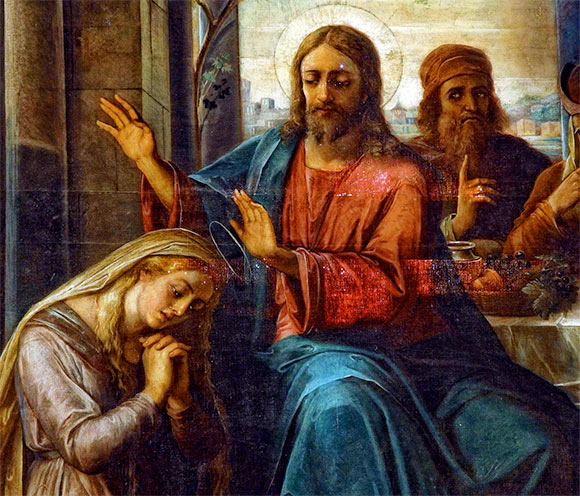The Last Great Day of the Feast
The September New Year
In a previous post we noted that September is a sort of New Year, and that it also marks Rosh Hashanah, which, already in biblical times, was considered a new year. It is mentioned in Leviticus 23:23-25 and also in Numbers 29:1-6 as the feast of trumpets.
And the LORD spoke to Moses, saying, “Speak to the people of Israel, saying, In the seventh month, on the first day of the month, you shall observe a day of solemn rest, a memorial proclaimed with blast of trumpets, a holy convocation. You shall not do any ordinary work, and you shall present a food offering to the LORD.”
The Old Testament mentions two other feasts as taking place in the seventh month. Ten days after the Feast of Trumpets falls the Day of Atonement (Yom Kippur), which is mentioned in Leviticus 16:29-31, Leviticus 23:26-32, and Numbers 29:7–11, and the feast of tabernacles (Sukkot) falls five days after the Day of Atonement.
The September Ember Days
Since at least the third century, Rome celebrated a September fast, and by no later than the fifth century, this September fast was one of four fasts throughout the year, called the Quatuor Tempora, the fast of the four seasons. This was anglicized as Ember days (Ember may simply be a shortened form of the longer Latin phrase). At the same time, these periods of fasting were the times when the Sacrament of Holy Orders was conferred, and thus the Embertide fasts have a particular relevance to prayer for the sanctification of priests.
The September Ember fast is particularly associated with the biblical feasts mentioned above, and especially with the feast of Tabernacles. This is only to be expected, since, in the Christian Calendar, which tended to be based off of the solar rather than the lunar year, the seventh month is September (September is Latin for Seventh Month), and so it was only natural for the Christians to apply this Scripture to September. This is often, though not always, close in time to the biblical lunar seventh month.
Can we not see a reflection of the Feast of Trumpets in the Introit for Ember Wednesday, “Blow the trumpet in the beginning of the month; for it is a statute in Israel, an ordinance of the God of Jacob” (Ps 80(81):5)? Perhaps more explicitly, the first Lesson of Ember Saturday is the very passage cited above in reference to the Day of Atonement from Leviticus 23:
In those days, the Lord said to Moses, The tenth of this seventh month is the Day of Atonement; it shall be most solemn, and shall be called holy; and you shall mortify yourselves on that day and offer an oblation to the Lord. On this day you shall not do any work, because it is the Day of Atonement, when atonement is made for you before the Lord, your God. Anyone who does not mortify himself on this day shall be cut off from his people; and if anyone does any work on this day, I will remove him from the midst of his people. This is a perpetual statute for you and your descendants wherever you dwell: you shall do no work, but shall keep a Sabbath of complete rest and mortify yourselves. Beginning on the evening of the ninth of the month, you shall keep this Sabbath of yours from evening to evening, says the Lord almighty.
The Feast of Tabernacles
Yet it is the Feast of Tabernacles that especially inspires the September Ember days. How could it be otherwise, since they traditionally fell on the Wednesday, Friday, and Saturday after September 14, the Exaltation of the Holy Cross, which means that they always fall during the week of Tabernacles (using the solar calendar, that is)?
The Feast of Tabernacles is explicitly mentioned in the second lesson of Ember Saturday. The lesson from Ember Saturday (Lev. 23:39-43) tells us “On the fifteenth day, then, of the seventh month, when you have gathered in the produce of the land, you shall celebrate a pilgrim feast of the Lord for a whole week. The first and the eighth day shall be days of complete rest. On the first day you shall gather foliage from majestic trees, branches of palms and boughs of myrtles and of valley poplars, and then for a week you shall make merry before the Lord, your God.” Take note that the eighth day is a day of precept, for we shall return to this.
A Feast of Expectation for the Eschatological Temple
The Epistle for Ember Wednesday, from Nehemiah 8:2-10, tells the story of the reading of law after the rebuilding of the temple on the first day of the seventh month. The reading of the law produces deep compunction, but Nehemiah instructs the people not to weep, but to celebrate the feast of trumpets.
In fact, the rebuilt temple was only a shadow of the former temple. Many who remembered the former temple wept when the new temple was being built, for it was insignificant in comparison (Ezra 3:7-13). Moreover it did not have the Ark of the Covenant. Prophets assured Israel that someday the true temple would come. In Isaiah 60, we read about the light that was to shine out as the Gentiles flowed to Jerusalem. It would be the Lord, and not the sun or the moon, that would give an everlasting light. Again, in Ezekiel 47 (and in other places) the prophets spoke of a river flowing out the temple. These passages gave rise to a fascinating ritual that took place in Jerusalem during the time of our Lord. The temple would be lit up all night by myriads of light, and water would be brought from the pool of Siloam (or Siloe) so a makeshift river could flow from the Temple. By this the expectation of the true temple was signified.
The Last Great Day of the Feast
The Gospel of John has a special focus on the body of Jesus as the fulfillment of the expectations of a new and final temple. St. John explicitly identifies Jesus’ Body as the temple, saying: “The temple He had spoken of was the Temple of His Body” (John 2:21).
Another passage in which Jesus identifies Himself as the Temple takes place on the eighth day of the Feast of Tabernacles. We have already seen that this is a solemn day of complete rest. It was on this day that Jesus stood up and cried aloud. Doubtless the temple was lit up with many torches in imitation of Isaiah 60 and water was being brought from Siloam to symbolise the stream that would flow forth from the temple, for “on that day living water shall flow out from Jerusalem” (Zechariah 14:8).
And with this backdrop, “on the last great day of the feast, Jesus stood and cried, saying: ‘If any man thirst, let him come to me, and drink, whoever believeth in me. As the scripture saith: Out of His Belly shall flow rivers of living water'” (John 7:37-38).
And a Soldier Opened His Side
Not long after that, these words of Jesus were fulfilled when He, the True Temple, the Light of the World, hung to the West of the Temple Mount, facing the East, and a soldier opened the side of the New Adam, and “immediately there came out blood and water” (John 19:34). And so, “there was water, flowing from under the threshold of the temple toward the east, for the front of the temple faced east. The water was flowing from under the right side of the temple, south of the Altar” (Ezekiel 47:1).
What was this water that flowed towards the East, to cover Jerusalem and flow out to the nations? “Now this He said of the Spirit which they should receive, who believed in him: for as yet the Spirit was not given, because Jesus was not yet glorified” (John 7:39).
But when Jesus had been glorified, when from the Altar of the Cross the Church, the New Eve, had flowed out from His opened side in the form of Water (Baptism) and Blood (the Eucharist), and when He had ascended into Heaven and entrusted His Church to the maternal care of His Mother, “all these with one accord were devoting themselves to prayer, together with the women and Mary the mother of Jesus” (Acts 1:14). Then it was that a mighty wind crashed, and tongues of fire came down from heaven, and the Spirit that Jesus spoke of entered the heart of the Apostles. Then was fulfilled the words of Jesus, and a “spring of water” welled up in them “unto eternal life” (John 4:7).
The Sinner
All of this is commemorated this week. Yet it is commemorated with strongly penitential terms. As Jesus said: “The days will come, when the bridegroom shall be taken away from them, and then shall they fast in those days” (Luke 5:35). It is true that the Body of Jesus is the longed-for temple. It is true that He unites His Church to His Body through Baptism, through the Eucharist, through the Priesthood. It is true that the Church becomes a temple in union with Him. Yet He has ascended to heaven, and a certain sadness pervades the Church’s modern Feast of Tabernacles. The Israel of Faith knows that the true and eschatological temple has come. She has drunk of the River flowing out from His Side. She finds herself “one flesh” with Him. Yet He is absent. “Where have you gone and left me groaning?” (from St. John of the Cross) And so she finds her days of remembering His presence — her Temple — as full of mourning to temper her joy.
And here the Gospel for Ember Friday strikes home, for the woman, the sinner, Mary Magdalene, bathed the Lord’s feet in her tears. She watered the One Who was to water her. Tears, it is believed, can be a gift of the Holy Spirit. They flow from the Holy Spirit, and they call down the graces of the Holy Spirit.
Let us, like Mary Magdalene, let the tears of our longing for union with Jesus call upon His Mercy for ourselves and for all His priests, so that the Water from His Side, the Water he prophesied about today, on the “last, great day of the feast”, may become in us a river of living water flowing up to eternal life. Amen.
